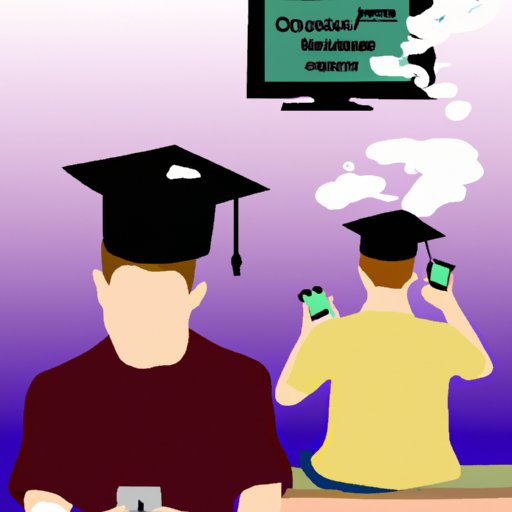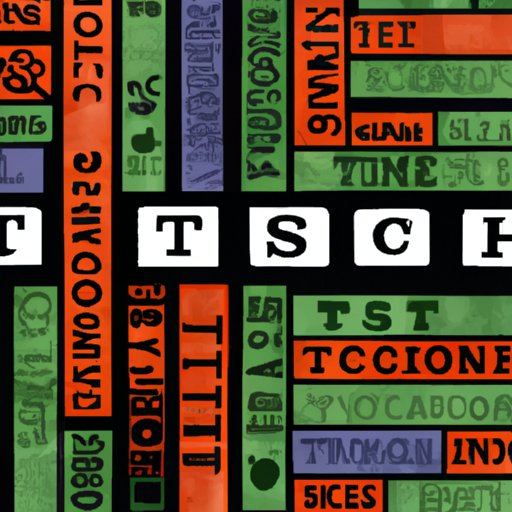Introduction
Technology has become an integral part of our daily lives, and its impact on education is no exception. From laptops and tablets to online learning platforms, technology has revolutionized the way we learn. However, technology can also be a double-edged sword; while it offers many benefits, it can also have a negative impact on education. In this article, we will explore why technology might be bad for education, and what measures can be taken to minimize its potential drawbacks.
Excessive Use of Technology Can Lead to Distractions and Reduced Focus for Students
One of the main issues with technology in education is that it can cause students to become easily distracted. With the rise of smartphones and other devices, students often find themselves constantly checking their notifications, social media accounts, and websites unrelated to their studies. This can lead to reduced focus and difficulty concentrating on schoolwork.
In addition, increased screen time has been linked to a number of health issues, including fatigue, headaches, and sleep problems. A study published in the journal Pediatrics found that too much screen time can lead to cognitive delays in children, as well as a higher risk of obesity and mental health issues.
Finally, social media use can be particularly distracting for students. Studies have shown that students who use social media while studying tend to have lower grades than those who don’t. Furthermore, students who are constantly checking their smartphones are more likely to experience anxiety, depression, and low self-esteem.
Technology Can Create a Disconnect Between Teacher and Student, Reducing Educational Engagement
Another potential downside of technology in education is that it can create a disconnect between teacher and student, leading to reduced educational engagement. Technology can make it difficult for teachers to establish meaningful connections with their students and monitor their progress.
In addition, technology can limit personal interaction between students and teachers. Online classes, for example, can make it harder for teachers to provide individual attention to each student. This can lead to a lack of motivation and engagement among students.

Technology Can Create a False Sense of Knowledge and Understanding in Students Who Rely Too Heavily On It
Another issue with technology in education is that it can give students a false sense of knowledge and understanding. When students rely heavily on technology, they often develop a superficial understanding of the material. This can lead to poor performance on tests and assignments.
Furthermore, students who overuse technology may become too reliant on it, making them unable to think or work independently. This can lead to a lack of critical thinking skills and creativity, which are essential for success in the classroom.

Technology Can Lead to Decreased Physical Activity and Increased Sedentary Behavior
Technology can also lead to decreased physical activity and increased sedentary behavior among students. With the rise of electronic devices, such as laptops and tablets, students are spending less time outside and engaging in physical activities. This can lead to a variety of health issues, such as obesity and heart disease.
In addition, research has shown that exercise can help improve concentration and memory, two key factors in educational success. Therefore, it is important to ensure that students are getting enough physical activity, even when using technology in the classroom.
Technology Can Lead to the Overuse of Standardized Testing and Rote Memorization, Limiting Critical Thinking Skills
Another potential downside of technology in education is that it can lead to the overuse of standardized testing and rote memorization, limiting critical thinking skills. With the growing popularity of online testing, students are often required to take multiple standardized tests throughout the year. This can reduce the amount of time spent on hands-on learning activities, which are essential for developing analytical skills.
In addition, technology can also lead to rote memorization, rather than true understanding. When students are required to memorize facts and figures without truly understanding the material, they are unable to apply their knowledge in real-world situations.
Technology Can Be Costly and Difficult to Maintain, Leading to Budget Cuts in Other Areas of Education
Finally, technology can be costly and difficult to maintain, leading to budget cuts in other areas of education. Providing access to technology requires significant financial resources, which can strain school budgets. In addition, schools must also invest in training and maintenance, which can further increase costs.
Furthermore, technology can be difficult to maintain and update. Schools may struggle to keep up with the latest advancements in technology, leading to outdated equipment and software. This can lead to reduced quality of education and overall student performance.
Conclusion
In conclusion, technology can have both positive and negative impacts on education. While it can offer a range of benefits, such as greater access to information and improved communication, it can also lead to distractions, reduced focus, decreased physical activity, and budget cuts. To minimize the potential drawbacks of technology, it is important to ensure that students are not overusing it and to encourage physical activity and hands-on learning activities.
(Note: Is this article not meeting your expectations? Do you have knowledge or insights to share? Unlock new opportunities and expand your reach by joining our authors team. Click Registration to join us and share your expertise with our readers.)
